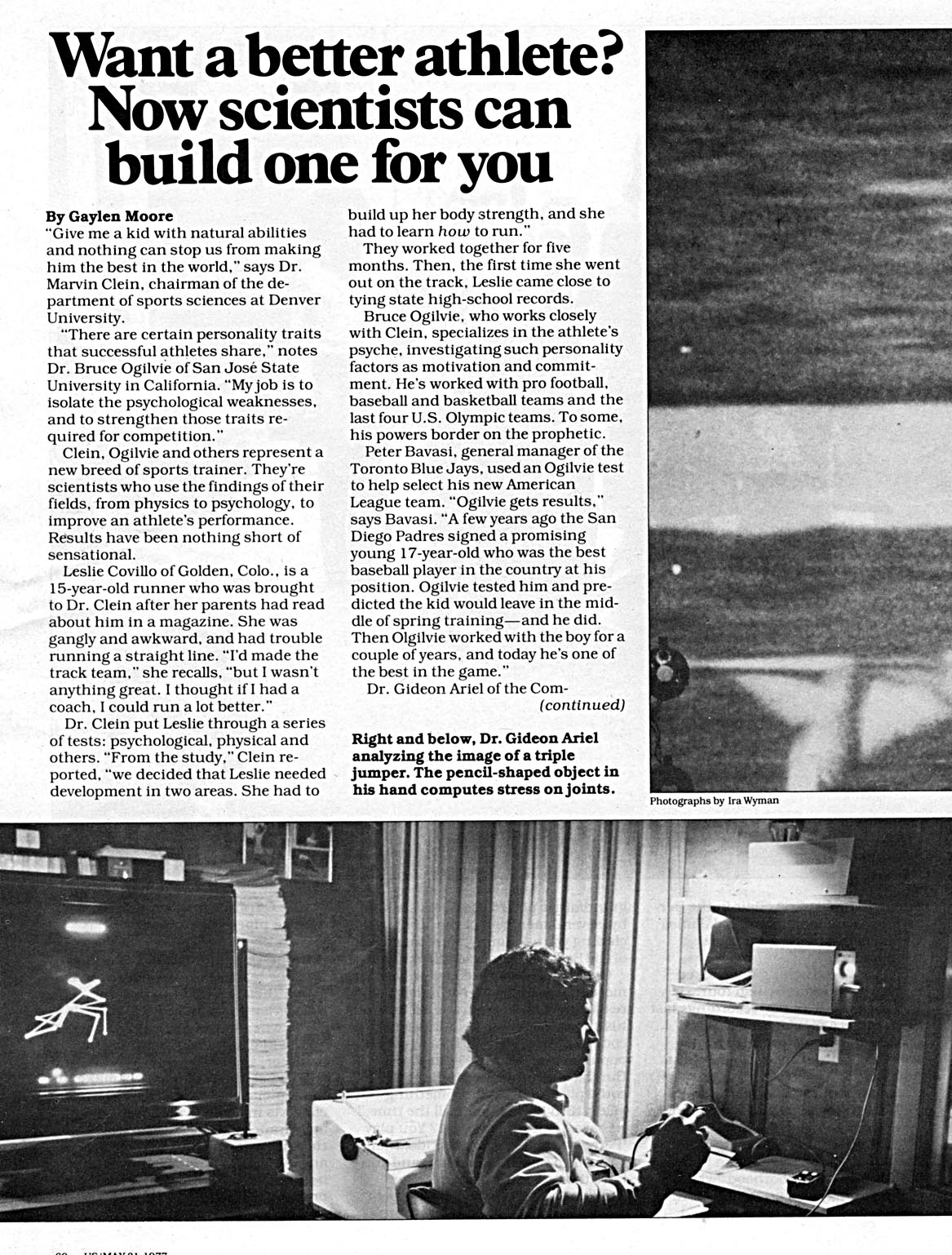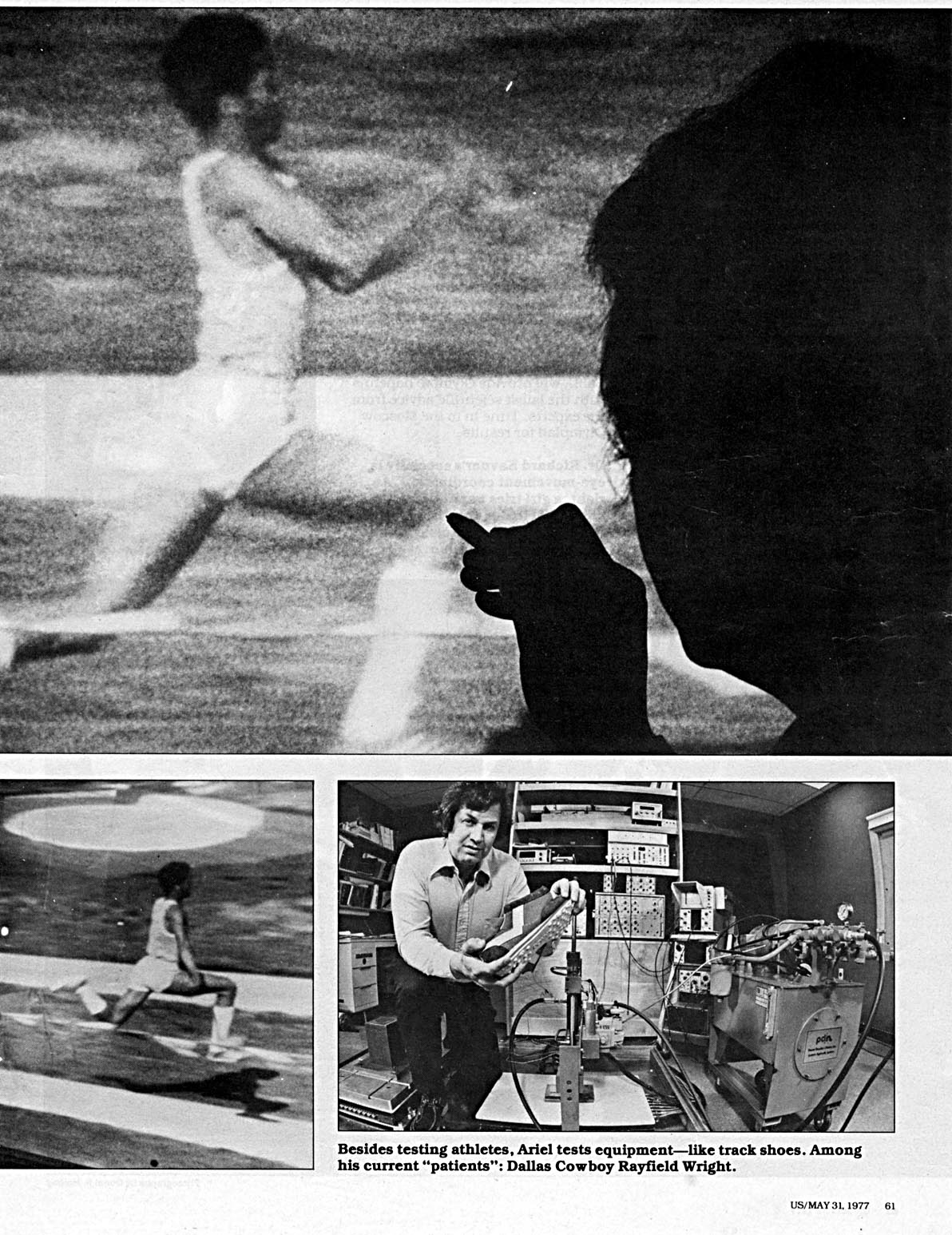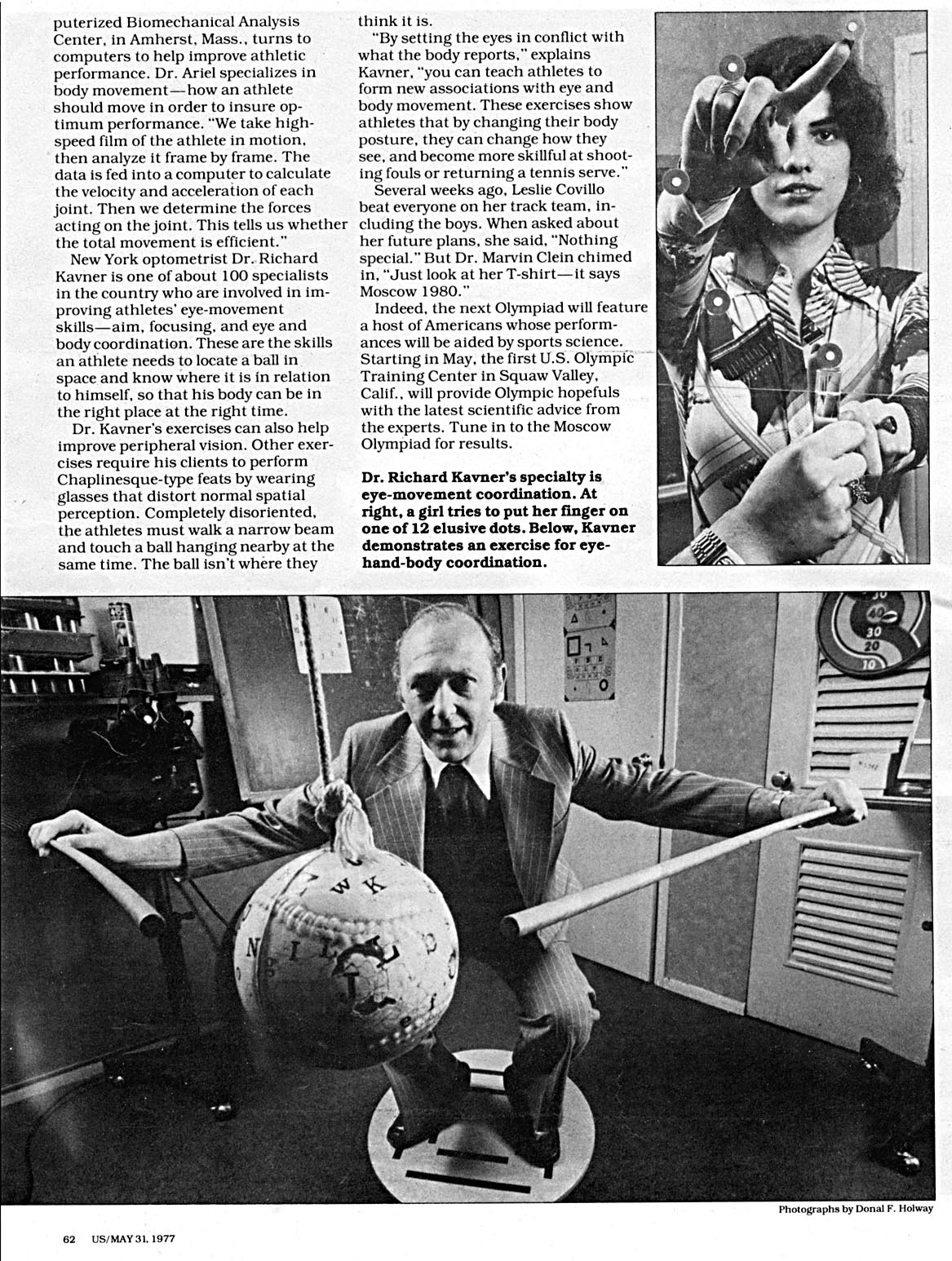Want a better athlete? Now scientists can build one for you
Give me a kid with natural abilities and nothing can stop us from making him the best in the world
By Gaylen Moore in US on Sunday, May 1, 1977
Want a Better Athlete? Now Scientists Can Build One for You
In this article, Gaylen Moore explores the emerging field of sports science, where experts use various scientific disciplines to enhance an athlete's performance. Dr. Marvin Clein, chairman of the department of sports sciences at Denver University, and Dr. Bruce Ogilvie of San Jose State University, are among the pioneers in this field. They use psychological and physical tests to identify and strengthen the traits required for competition.
One of their success stories is 15-year-old runner Leslie Covillo, who improved significantly after five months of training. Dr. Gideon Ariel uses computerized biomechanical analysis to optimize body movement, while Dr. Richard Kavner improves athletes' eye-movement skills.
The article concludes by highlighting the upcoming U.S. Olympic Training Center in Squaw Valley, California, which will provide Olympic hopefuls with the latest scientific advice from these experts.
Tip: use the left and right arrow keys
Want a better athlete?
Now scientists can build one for you
By Gaylen Moore
"Give me a kid with natural abilities and nothing can stop us from making him the best in the world," says Dr. Marvin Clein. chairman of the department of sports sciences at Denver University.
"There are certain personality traits that successful athletes share." notes Dr. Bruce Ogilvie of San Jose State University in California. "My job is to isolate the psychological weaknesses, and to strengthen those traits required for competition."
Clein, Ogilvie and others represent a new breed of sports trainer. They're scientists who use the findings of their fields, from physics to psychology, to Improve an athlete's performance. Results have been nothing short of sensational.
Leslie Covillo of Golden. Colo.. is a 15-year-old runner who was brought to Dr. Clean after tier parents had read about him in a magazine. She was gangly and awkward, and had trouble running a straight line. "I'd made the track team." she recalls. "but I wasn't anything great. I thought if 1 had a coach. I could run a lot better."
Dr. Clein put Leslie through a series of tests: psychological, physical and others. "From the study," Clein reported. "we decided that Leslie needed development in two areas. She had to build up her body strength, and she had to learn how to run."
They worked together for five months. Then, the first time she went out on the track. Leslie came close to tying state high-school records.
Bruce Ogilvie. who works closely with Clein. specializes in the athlete's psyche. investigating such personality factors as motivation and commitment. lie's worked with pro football. baseball and basketball teams and the last four U.S. Olympic teams. To some. his powers border on the prophetic.
Peter Bavasi, general manager of the Toronto Blue Jays, used an Ogilvie test to help select his new American League team. "Ogilvie gets results." says Bavasi. "A few years ago the San Diego Padres signed a promising young 17-year-old who was the best baseball player in the country at his position. Ogilvie tested him and predicted the kid would leave in the middle of spring training-and tic did. Then Olgilvie worked with the boy for a. couple of years. and today he's one of the best in the game."
Dr. Gideon Ariel of the Com
Right and below, Dr. Gideon Ariel analyzing the image of a triple jumper. The pencil-shaped object in his hand computes stress on joints.
Photographs by Ira Wyman
Besides testing athletes, Ariel tests equipment-like track shoes. Among his current "patients": Dallas Cowboy Rayfield Wright.
UWAM1, 1977
puterized Biomechanical Analysis Center, in Amherst. Mass., turns to computers to help improve athletic performance. Dr. Ariel specializes in body movement-how an athlete should move in order to insure optimum performance. "We take highspeed film of the athlete in motion. then analyze it frame by frame. The data is fed into a computer to calculate the velocity and acceleration of each joint. Then we determine the forces acting on the joint. This tells us whether the total movement is efficient."
New York optometrist Dr. Richard Kavner is one of about 100 specialists in the country who are involved in improving athletes' eye-movement skills-aim. focusing. and eye and body coordination. These are the skills an athlete needs to locate a ball in space and know where it is in relation to himself, so that his body can be in the right place at the right time.
Dr. Kavner's exercises can also help improve peripheral vision. Other exercises require his clients to perform Chaplinesque-type feats by wearing glasses that distort normal spatial perception. Completely disoriented. the athletes must walk a narrow beam and touch a ball hanging nearby at the same time. The ball isn't where they think it is.
"By setting the eyes in conflict with what the body reports." explains Kavner. "you can teach athletes to form new associations with eye and body movement. These exercises show athletes that by changing their body posture, they can change how they see, and become more skillful at shooting fouls or returning a tennis serve."
Several weeks ago. Leslie Covillo beat everyone on her track team, including the boys. When asked about her future plans. she said. "Nothing special." But Dr. Marvin Clein chimed in. "Just look at her T-shirt-it says Moscow 1980."
Indeed, the next Olympiad will feature a host of Americans whose performances will be aided by sports science. Starting in May. the first U.S. Olympic Training Center in Squaw Valley. Calif.. will provide Olympic hopefuls with the latest scientific advice from the experts. Tune in to the Moscow Olympiad for results.
Dr. Richard Kavner's specialty is eye-movement coordination. At right, a girl tries to put her finger on one of 12 elusive dots. Below, Kavner demonstrates an exercise for eyehand-body coordination.
Photographs by Donal F. Ilolway
62 US/MAY31.1977
Leslie Covillo, 15, is the star patient of Dr. Marvin Clein, below. She began the program as an also-ran, after five months was beating the boys on her track team. Leslie refuses to comment on the future, but her T-shirt says "Moscow 1980:'
Photographs by Tony Korody/Sygma
US/MAY31.1977 65





